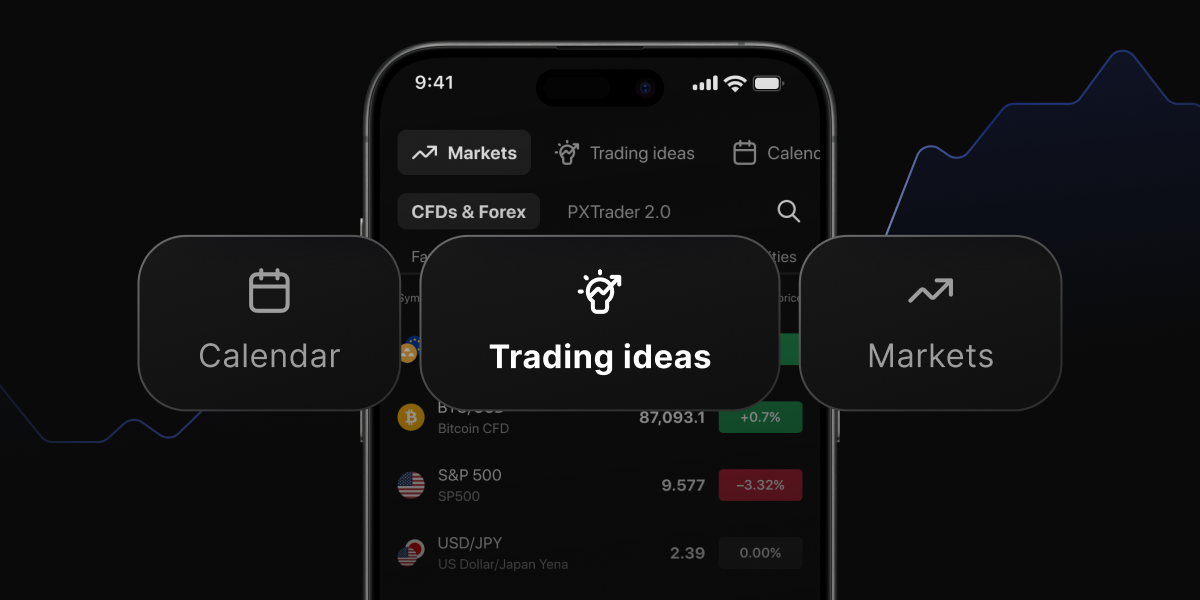We are thrilled to announce that we have broadened our forex trading stable to include five new currencies, as well as five new trading pairs, in order to give you a wider array and opportunity to trade on the global foreign exchange market. You can begin trading these new assets from today.
Apart from offering all the major pairs, we have started to look towards currencies that are hotly traded and full of potential profit opportunities, but may be lesser known in the forex market.
By offering more currencies, and a number of new pairs, we hope that your forex trading experience will be heightened on PrimeXBT.
New Assets Coming To PrimeXBT
The new assets, and their pairs, include:
EUR/MXN
EUR/HKD
EUR/ZAR
GBP/HKD
GBP/MXN
GBP/ZAR
USD/CNH
USD/MXN
USD/THB
USD/ZAR
New trading pairs based on existing assets include:
GBP/TRY
EUR/TRY
XAU/EUR
XAU/AUD
XAG/AUD
We have now listed the Mexican Peso (MXN); the South African Rand (ZAR); the Hong Kong Dollar (HKD); the Chinese Yuan Renminbi (CNH), and the Thai Baht (THB). All of these countries, as well as Hong Kong, a Special Administrative Region, are considered up and coming in the global economy and present great opportunities to trade their currencies at this time.
Understanding The New Assets
As mentioned, Mexico, South Africa, China and Thailand are all countries that are considered to be growing rapidly, as well as the Special Administrative Region of Hong Kong. These nations have not yet reached their potential, but are showing signs of becoming global financial powers.
At the moment, and in comparison to the established forex currencies that are often traded, these currencies are not as strong, but are full of trading potential.
To better understand why these currencies are such good opportunities, and why we have decided to offer them to our traders, we have briefly outlined each.
The Mexican Peso (MXN)
The Mexican Peso was originally based on the currency of Spain, as the South American’s colonising power, but when the occupation ended, the country kept the name of the currency. This currency has gone through a lot of transformation since the 18th century when it held the same value as the US Dollar, but years of inflation and economic issues have pushed its value to stand at 22 Pesos to 1 Dollar today.
In 1993 the Bank of Mexico introduced a new currency, the nuevo peso (MXN), written “N$” followed by the numerical amount. One new peso, or N$1.00, was equal to 1000 of the obsolete MXP pesos. The reason behind this was to try and stabilize the economy after Mexico defaulted on its external debt in 1982, and as a result the country suffered a severe case of capital flight, followed by several years of inflation and devaluation.
Today, however, the resulting stability of the economy helped the growth in foreign investment so that now the Mexican peso is now among the 15 most traded currencies in recent years.
MXN may be traded against the Pound, Euro, or US Dollar on PrimeXBT.
The South African Rand (ZAR)
The Rand is a currency that is linked to the colonial past of South Africa as well. The country was first colonised by the Dutch, and then the British, before gaining independence in 1910. But, the Rand was only made the official currency of the country in 1961.
The Rand began life tied to the US Dollar, but in 1974 the South African authorities decided to delink the rand from the dollar, and introduced a policy of independent managed floating. At the time, the Rand was trading at 87 cents to the dollar.
Currently, the Rand trades at R16 to $1 and has been heavily influenced by issues both internally with the African country, as well as the external issues surrounding Europe and the US. Local events, such as increasing debt, socio-political unrest and energy issues have kept the rand in a weakened position, while the European sovereign debt crisis has had a massive impact on South Africa too,
Regardless, South Africa, and the Rand by extension, is still seen as laden with potential as South Africa still commands a position on the global stage in terms of natural resources, like Gold and Diamonds. It is also the largest economy on the African continent.
ZAR may be traded against the Pound, Euro, or US Dollar on PrimeXBT.
Hong Kong Dollar (HKD)
Hong Kong is an interesting ‘country’ in its own right. It began as a free-trading port in Asia in 1841 but was soon colonised by the British and the Sterling was implemented as its official currency.
During the Japanese occupation of 1941 to 1945, the Japanese Military Yen (JMY) became the only legal currency accepted for daily exchange. After WWII, the JMY became obsolete, and Hong Kong regained full control of their banks. Hong Kong then returned to Chinese rule in 1997 as a Special Administrative Region (SAR) where it remains today with the power to issue its own currency — the HKD.
Hong Kong has since become a tiny economic powerhouse across the globe with many major companies setting up the headquarters in the SAR. This has helped bolster the currency and it is one of the most rapidly growing foreign exchanges around today.
At the beginning of the year, the HKD had reached a three-year high. Today, one US dollar is worth about $7 HKD.
HKD may be traded against the Pound and Euro on PrimeXBT.
Chinese Yuan Renminbi (CNH)
China remains one of the most rapidly developing economies on the planet and is arguably the second-largest today behind the USA. This has not always been the case and in fact, less than 20 years ago China was ranked sixth, and it has been predicted that by 2030, it will be the world’s leader.
The renminbi was first issued on December 1, 1948, by the Chinese Communist Party’s People’s Bank of China. It only became pegged to the USD in 1997, despite criticism from America. In 2005, a decision was made to unpeg the currency from the dollar, which is in part is fueling the growth of the Chinese economy.
CNH is the “offshore” version of China’s currency, trading outside of mainland China within Hong Kong, Singapore, and other neighboring regions and internationally. CNY, is the onshore version of the nations’s currency traded within mainland China only.
Today, CNH is poised to grow further as the Chinese economy rapidly expands, and if the Chinese can overtake the US, there is sure to be a big boost in the value of the CNH.
CNH may be traded against the US Dollar on PrimeXBT.
Thai Baht (THB)
The Thai Baht has long been regarded as one of the strongest currencies in South East Asia and this is down to its developed, commercialized economy that is heavily export-dependent. In fact, exports account for more than two-thirds of the GDP of Thailand.
Tourism is also a big part of Thailand’s economy, and it helps stabilize the nation meaning that around US$1.6 billion Baht are traded on the Forex market, and there is around ฿1.455 trillion in total circulation.
Although it is regarded as an exotic currency, it still attracts considerable interest among investors. As the Thai economy is relatively stable, the Baht is accepted widely throughout the South East Asian region, and in particular in the neighbouring countries of Cambodia, Laos, Malaysia, Vietnam and Myanmar.
THB may be traded against the US Dollar on PrimeXBT.
More Opportunities For Traders
We are excited to be able to expose our clients to these new trading assets, but we have also added in five new pairs on existing assets which will also enhance the trading experience for our traders.
These include:
EUR/TRY
GBP/TRY
XAU/EUR
XAU/AUD
XAG/AUD
This means our traders can trade the Euro and the Pound against the Turkish Lira, but we have also expanded our opportunities to trade Gold and Silver against the Euro and the Australian Dollar.
These new assets and new trading pairs represent our continued aim to provide our clients with the widest range of assets and the best trading infrastructure. With all the other advantages and key features, we already have now it is the optimal option for smart traders on the market. Thank you for supporting us! Enjoy trading, and be on the lookout for other improvements along the way.
The content provided here is for informational purposes only. It is not intended as personal investment advice and does not constitute a solicitation or invitation to engage in any financial transactions, investments, or related activities. Past performance is not a reliable indicator of future results.
The financial products offered by the Company are complex and come with a high risk of losing money rapidly due to leverage. These products may not be suitable for all investors. Before engaging, you should consider whether you understand how these leveraged products work and whether you can afford the high risk of losing your money.
The Company does not accept clients from the Restricted Jurisdictions as indicated in our website/ T&C. Some services or products may not be available in your jurisdiction.
The applicable legal entity and its respective products and services depend on the client’s country of residence and the entity with which the client has established a contractual relationship during registration.




